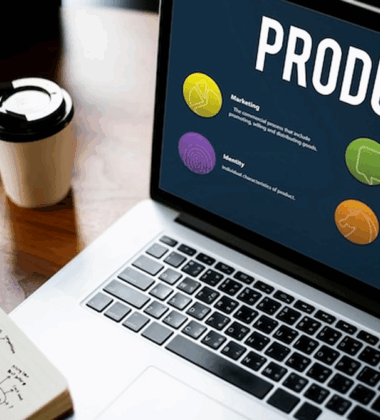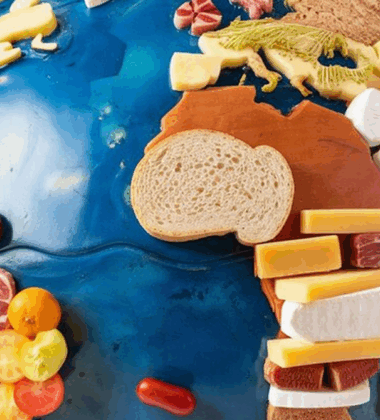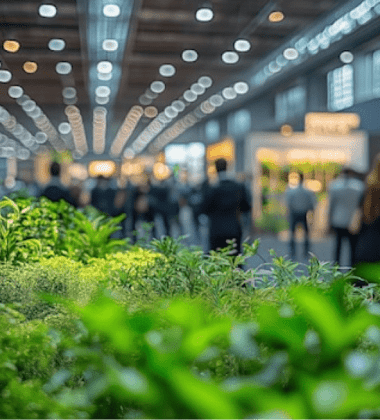If you plan to exhibit at the Food and Beverage Expo USA—specifically at the Global Products Expo 2025, taking place June 26–28 at the New Jersey Expo Center—understanding the latest global food policy updates is more than a checkbox item. It’s a business-critical component of your success strategy.
Export laws, packaging standards, and labeling regulations have evolved significantly in the past year, and non-compliance isn’t just risky—it could block your product from entering your target markets.
In this post, we’ll break down what every food and beverage brand, exporter, and startup needs to know about international food policies in 2025, with a clear focus on staying compliant and competitive at one of the biggest industry showcases in the U.S.
Why Global Food Policy Matters at Trade Shows
Trade shows like the Food and Beverage Expo USA have become powerful global platforms for F&B businesses looking to scale internationally. Exhibitors are not just showcasing to local buyers—they’re pitching to importers, wholesalers, and international retailers who expect regulatory readiness.
Whether you’re presenting artisan goods, plant-based products, or packaged snacks, your brand’s ability to navigate food export laws and global food labeling standards can directly impact your partnerships, media coverage, and post-event sales.
Key Food Policy Themes for 2025 F&B Exhibitors
Here’s a breakdown of the major global food policy areas affecting exhibitors at events like the Global Products Expo and beyond:
1. Country-of-Origin Transparency
Expect stricter enforcement on origin labeling, especially in Europe, the U.S., and emerging Asian markets. “Made in” or “Produced in” declarations must now align with new trade agreement rules—and that includes components in multi-origin products.
Tip: Make sure your packaging and digital product descriptions match the actual origin of both the product and its core ingredients.
2. Allergen Disclosure Requirements Are Expanding
The U.S. added sesame to its list of major allergens in 2023, and other countries are following suit with stricter labeling rules for trace allergens.
At the Food and Beverage Expo USA, expect buyers to ask:
- Are your labels clear on allergens?
- Do you follow the new FDA and EU allergen formatting guidelines?
- Is your product safe for export into allergen-sensitive countries?
3. Nutritional Labeling and Claims Regulation
Terms like “sugar-free,” “natural,” or “high protein” are more heavily scrutinized. Each region defines them differently, and false claims can lead to shipment holds or product bans.
If your product makes a health claim, prepare:
- Region-specific nutrition panels
- Lab certificates or testing documentation
- Clear ingredient breakdowns in English and your target export language(s)
4. Sustainability & Circular Economy Mandates
Countries like Germany, Canada, and Japan are enforcing eco-packaging laws that penalize single-use plastics and require recyclable materials.
At events like the Global Products Expo, you’re not just judged on taste—you’re evaluated on packaging responsibility.
Bonus points if your booth messaging aligns with:
- Circular economy thinking
- Low-waste practices
- Eco-certifications
5. Cultural and Religious Labeling Compliance
Don’t overlook Halal, Kosher, or Vegan certifications. These aren’t just marketing perks—they’re often regulatory essentials in markets like the Middle East, Southeast Asia, and parts of Europe.
At the Food and Beverage Expo USA, international buyers may request:
- Documentation of third-party certification
- Proof of ethical sourcing
- Manufacturer origin details
How to Prepare Your Brand for Global Compliance
Here’s a pre-show checklist for F&B exhibitors preparing for the Global Products Expo 2025:
✅ Review your export documentation (health certificates, invoices, labeling)
✅ Cross-check nutrition labels against your top three target regions
✅ Get packaging tested for sustainability and recyclability
✅ Secure allergen testing results and third-party claims certifications
✅ Work with a regulatory consultant if entering complex markets
Pro tip: Displaying your compliance credentials proudly at your booth can drive trust and make conversations smoother with serious buyers.
The Bigger Picture: Global Food Policy and Brand Trust
In 2025, trust and transparency are the new marketing currencies.
Consumers, regulators, and trade partners want the same thing:
Clear, compliant, and consciously produced food.
That’s why food and beverage trade shows are no longer just flavor showcases—they are stages for policy-aligned innovation.
If you can prove that your product is ready for international shelves, you’re not just impressing attendees—you’re building global distribution pipelines.
Final Thoughts
Global food policy is more than paperwork. It’s a passport to new markets, buyers, and brand credibility. As you prepare to exhibit at the Food and Beverage Expo USA, make sure your product meets not only taste expectations—but also the evolving regulatory standards that define the global food and beverage trade in 2025.
Exhibiting at the Global Products Expo 2025? Start your compliance prep now—and showcase a product the whole world can say yes to.





